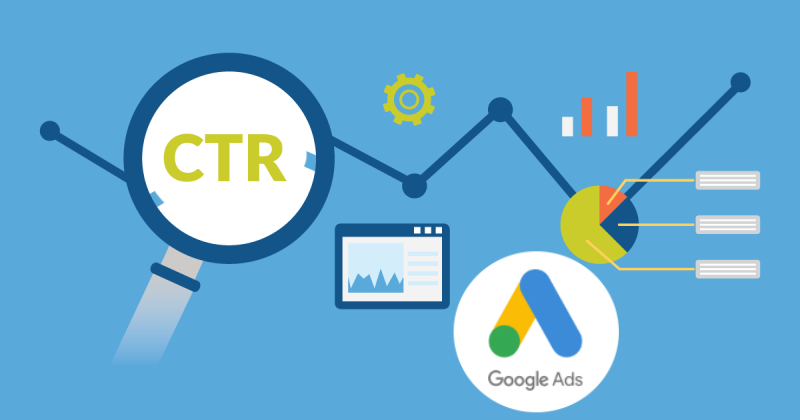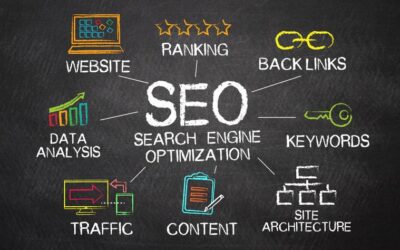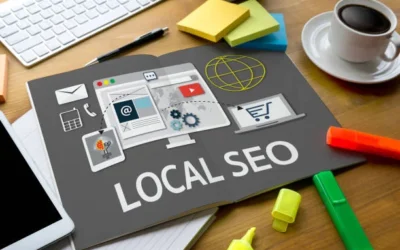How to Improve Lead Quality in Google Ads Campaigns
Imagine spending thousands of dollars and getting hundreds of contacts only to realize most of them were never going to buy from you in the first place. That’s why understanding how to improve lead quality in Google Ads is essential. It’s the difference between burning cash and building a growth engine.
This guide explores strategies, tools, common mistakes, and expert tactics to help you attract better leads that are more likely to convert, enabling your sales team to focus on what matters most: closing real business.
📘 Table of Contents:
- Why Lead Quality Matters More Than Quantity
- Top 5 Questions on Improving Lead Quality in Google Ads
- 13 In-Depth Strategies to Improve Lead Quality
- How Landing Pages Impact Lead Quality
- Mistakes That Sabotage Lead Quality
- How to Measure and Track Lead Quality
- Case Study: Bad vs. Great Lead Quality Campaign
- Final Thoughts and Action Plan
- 🚀 Work With Excell to Get Better Leads
1. Why Lead Quality Matters More Than Quantity
Not necessarily.
The real challenge isn’t generating leads it’s generating the right leads. Focusing solely on volume can be deceptive. You might receive hundreds of contacts, but if the majority are unqualified, not ready to buy, or simply seeking free information, then those “leads” are just vanity metrics that look good but don’t drive results.
🔻 Poor Lead Quality Can Cause:
Let’s break down why chasing large volumes of low-quality leads can backfire:
- Higher Cost Per Acquisition (CPA): If it takes 100 leads to land one customer, you’re wasting money on the other 99. That drives up your CPA, making your campaigns inefficient and unsustainable.
- Low Conversion Rates: A flood of disinterested or unqualified traffic rarely converts. If only 1–2% of leads take meaningful action (such as scheduling a call or making a purchase), your ROI suffers.
- Burnt-Out Sales Teams: Your sales reps get overwhelmed trying to follow up with everyone, only to discover that most leads are unqualified. This leads to frustration, wasted effort, and a demotivated team.
- Weak Return on Ad Spend (ROAS): When your ad budget goes toward people who won’t buy, your return drops. This can make even well-targeted ads seem ineffective when, in reality, it’s the targeting or lead quality that’s flawed.
- Lost Time and Business Momentum: Chasing the Wrong Leads Slows Down Your Pipeline. Valuable time spent following up with the wrong people means less time nurturing genuine prospects who are ready to convert.
Now let’s look at what happens when your lead generation strategy emphasizes quality over quantity:
- Better Close Rates: High-quality leads are already looking for what you offer. They’re informed, interested, and more likely to say “yes” when contacted.
- Shorter Sales Cycles: Instead of spending weeks educating the lead or overcoming objections, high-intent leads move through your funnel faster because they’ve already done their research.
- Higher Average Order Value (AOV): Serious buyers tend to purchase more, upgrade to premium packages, or add additional services, making each conversion more valuable.
- Stronger Brand Loyalty: When you attract the right clients, they tend to stay longer, leave more positive reviews, refer friends, and become brand ambassadors.
- Predictable Revenue Growth: Quality leads that regularly convert into paying customers allow you to build forecasting models and scale your operations with confidence.
2. Top 5 Questions on Improving Lead Quality in Google Ads

1. What’s a “high-quality” lead?
A high-quality lead isn’t just someone who clicked your ad or filled out a form. It’s someone who is genuinely positioned to become a paying customer. Quality leads are aligned with your ideal customer profile (ICP) and show signs of being ready, willing, and able to do business with you.
Characteristics of High-Quality Leads:
- ✅ Purchase Intent: They’re actively searching for a solution, whether it’s hiring a lawyer, scheduling a consultation, or buying software. Their behavior signals urgency and interest.
- ✅ Fits Your ICP: The lead matches your target demographics, industry, income bracket, company size, job title, or location. For instance, if you sell B2B SaaS to marketing directors, a small-town student is not your ideal lead.
- ✅ Budget-Friendly: A lead that can’t afford your solution will almost always bounce after the initial interaction. Good leads align with your pricing model.
- ✅ Contact-Ready: They provide a working phone number or email and are responsive to outreach. This is where lead validation and call tracking come into play.
- ✅ Engaged Behavior: High-quality leads don’t just click. They stay on your landing page, watch videos, scroll through features, and often return for follow-up visits or interactions.
In contrast, low-quality leads are often impulsive clickers, tire-kickers, or people who misunderstood your offer.
2. Why do I keep getting low-quality leads?
If you’re seeing a flood of leads but none of them convert, you’re not alone. This is a common symptom of fundamental misalignment in your ad funnel. Here’s why:
Common Causes of Low-Quality Leads:
- ❌ Poor Keyword Targeting: If you’re relying on broad match keywords, you’re attracting anyone and everyone, even people with zero intent to buy. For example, bidding on “family law” may attract individuals seeking free legal advice or information rather than hiring a lawyer.
- ❌ Generic Ad Copy: Ads that say things like “Click here for more info” or “Contact us now” don’t filter your audience. Instead, they encourage everyone to click even if they’re not a good fit.
- ❌ Lack of Form Filtering or Lead Scoring: A simple form asking only for name and email is too open. Without fields like budget, business size, or project timeline, there’s no way to pre-qualify the user.
- ❌ Misaligned Landing Pages: If your landing page doesn’t deliver on the ad’s promise (or worse, it’s just a homepage), users get confused and bounce or convert with the wrong expectations.
- ❌ No CRM Feedback Loop: Without a customer relationship management (CRM) tool integrated with your ad platform, you can’t trace whether a lead became a customer. That means you’re optimizing blind.
Improving lead quality means improving the entire funnel, not just targeting or copy.
3. Can Google Ads produce quality leads?
Absolutely, but only if your campaigns are strategically structured and intelligently optimized. Too many businesses treat Google Ads as a volume game, but the best results come when you treat it like a precision tool.
Keys to Producing High-Quality Leads with Google Ads:
- 🎯 Intent-Based Keyword Targeting: Focus on commercial-intent keywords like “hire a car accident lawyer” or “buy SEO software” instead of educational queries like “how to file an accident report.”
- 🔁 Conversion Tracking: Track meaningful actions—form fills, calls, and bookings, not just clicks. This gives Google’s algorithms data to optimize around real outcomes.
- 🧠 Smart Bidding: Use bidding strategies like Target CPA (Cost Per Acquisition) or Maximize Conversions. These tools leverage machine learning to drive more qualified actions based on past behavior.
- 🧩 Ad-Landing Page Alignment: A disjointed experience kills lead quality. The promise in your ad should be fulfilled exactly by your landing page, with the same offer, language, and visuals.
- 🔄 Ongoing Optimization: Google Ads isn’t a “set it and forget it” platform. Regular reviews of search terms, demographics, and device performance help ensure you’re continuously attracting better leads, not just more of the same.
When used correctly, Google Ads is one of the best tools for scaling a business with precision-targeted, high-value prospects.
4. Does my ad copy impact lead quality?
Your ad copy is your gatekeeper. It determines who clicks and why. Excellent ad copy doesn’t just attract attention. It repels the wrong audience.
How Ad Copy Filters Leads:
- 💸 Price Transparency: If your service costs $1,000/month, be transparent about it. It may reduce your clicks, but the leads who do click will be better aligned with your offer.
- 📍 Location-Based Language: “Serving only Houston,” “Available in the U.S.,” or “Remote clients welcome,” tells users whether they qualify based on geography.
- 🧑💼 Client Type Specificity: Phrases like “Built for SaaS Founders” or “Ideal for businesses with 20+ employees” tell casual clickers, “This isn’t for you.”
- “Only for business owners earning $10k+/mo.”
- “Talk to an attorney in San Diego today.”
- “Schedule a free demo package starting at $499/month.”
Good copy sets expectations upfront, so users self-select in or out before incurring costs.
5. How do I measure lead quality?
This is where most campaigns go off track. Many advertisers focus solely on surface-level metrics, such as cost per lead (CPL), click-through rate (CTR), or impressions. But these don’t tell you anything about lead value.

- 🧠 CRM Integrations: Tools like HubSpot, Salesforce, or Zoho allow you to see which leads converted, how long the sales cycle was, and which campaign generated the most revenue, not just clicks.
- 🔢 Lead Scoring: Assign point values to form fields (e.g., “Budget over $1,000 = +5 pts,” “Decision maker = +3 pts”). This enables your sales team to prioritize leads and provides you with more effective campaign optimization data.
- 📊 Analytics Behavior Tracking: Use Google Analytics and Tag Manager to monitor what users do post-click:
- Do they watch your explainer video?
- Do they scroll to the pricing section?
- Do they bounce in 3 seconds?
This behavior helps differentiate curious users from serious buyers.
- 🧾 Offline Conversion Tracking: Often, conversions occur off-site, such as during a phone call, sales consultation, or when an invoice is sent. By integrating your CRM or uploading offline conversion data back into Google Ads, you close the feedback loop and teach the platform what constitutes a good lead.
- 📈 Custom Reporting Dashboards: Build dashboards in Looker Studio that visualize:
- Lead quality by keyword.
- Conversion rate by location
- ROAS by audience type
- Revenue per campaign
- With this data in hand, you stop guessing and start making informed decisions that drive high-value conversions.
3. 13 In-Depth Strategies to Improve Lead Quality
Choose keywords that reflect buyer readiness:
- “Hire divorce lawyer San Antonio”
- “Affordable SEO agency for small businesses”
- “Free consultation personal injury attorney”
Avoid vague terms like:
- “Legal tips”
- “What is SEO?”
- These are research-based and unlikely to convert quickly.
The broad match often wastes the budget by serving ads for queries that are loosely related. Instead:
- Use [exact match] for pinpoint targeting
- Use “phrase match” to retain flexibility with context
- Use negative keywords like “free,” “internship,” or “DIY” to eliminate non-buyers
Add audience signals to improve relevance:
- In-market segments: people actively shopping for your service
- Custom segments: users who visited specific URLs or searched particular queries
- Retargeting: previous site visitors are more likely to convert
Only advertise where you serve customers. Example:
- A Houston law firm shouldn’t show ads in Dallas.
- A luxury product shouldn’t target low-income zip codes.
Use:
- Radius targeting
- Zip code filters
- Location-specific ad copy
Make your ad filter out bad leads with lines like:
- “Only for businesses with $10k/month marketing budgets”
- “Serving Austin area only.”
- “Get started from $1,500/month.”
This saves you from irrelevant clicks.
Your homepage won’t cut it. Match every ad group with a specific, relevant page. Include:
- The exact keywords from your ad
- Clear benefits
- Lead form with filtering questions
- Trust signals (reviews, awards)
Don’t just ask for your name and email. Ask:
- Project type
- Estimated budget
- Decision timeline
- This helps your team prioritize the best leads.
Slow-loading or mobile-unfriendly pages destroy conversions. Use:
- Responsive design
- Compress images
- Use Google’s PageSpeed Insights for technical fixes
Let Google’s machine learning help:
- Maximize conversions: focuses on volume
- Target CPA: balances cost with value
- Target ROAS: targets profitable leads
Select options based on your goals and the value of the leads you are targeting.

- CallRail
- WhatConverts
- Invoca
Track source, call duration, and outcome. Score the calls:
- 5 = Hot lead, scheduled
- 3 = Interested, not urgent
- 1 = Unqualified
Use Google Analytics to monitor:
- Time on site
- Pages per session
- Scroll depth
- Clicks on CTAs
These metrics provide insight into who is genuinely engaged.
12. Integrate Your CRM with Google Ads
By connecting HubSpot, Salesforce, or Zoho with Google Ads, you can:
- See which ads bring paying customers
- Optimize for high-value leads, not just clicks
- Create audiences based on customer data
4. How Landing Pages Impact Lead Quality
Landing pages are not just part of the process. They are the bridge between ads and conversion.
- Don’t align with the ad promise
- Cause confusion and drop-offs
- Have poor conversion layout
- A clear headline that matches the ad copy
- Supporting visuals or explainer videos
- Social proof (testimonials, ratings, awards)
- Strong CTA (call now, book free consult)
- Trust elements (security seals, Better Business Bureau)
5. Mistakes That Sabotage Lead Quality

6. How to Measure and Track Lead Quality
- Google Ads Conversion Tracking: Tag actions like form fills or calls.
- Google Analytics: Monitor bounce rate, time on site, and user flow.
- Call Tracking Platforms: Score calls and analyze intent.
- CRM Systems: Attributes Lead to Revenue.
- Cost Per Qualified Lead (CPQL)
- Lead-to-Sale Conversion Rate
- Value Per Lead
- ROAS by Campaign
- Close Rate by Keyword/Ad Group
7. Case Study: Bad vs. Great Lead Quality Campaign
- Broad match on “accident lawyer.”
- Ad: “Injured? Call now!”
- Landing page: Generic homepage
- 300 leads, seven quality leads
- CPA: $115
- Close rate: 2.3%
- Exact match: [injury attorney in Austin free consultation]
- Ad: “Injured in Austin? Talk to a Top-Rated Lawyer Today”
- Landing page: Targeted, mobile-optimized trust badges
- 120 leads, 40 quality leads
- CPA: $65
- Close rate: 20%
8. Final Thoughts and Action Plan
Improving your lead quality is a process, not a plug-and-play solution. But with the proper adjustments to targeting, messaging, landing pages, and tracking, you can drastically improve your results.
Your 30-Day Action Plan:
- Audit your keywords and switch to intent-driven terms.
- Rewrite ad copy to filter out bad leads.
- Create dedicated landing pages for each service or offer.
- Set up Google Ads and Analytics conversion tracking.
- Integrate your CRM for post-lead insights.
- Use call tracking to monitor offline leads.
- Refine weekly based on lead quality, not just clicks.
9. 🚀 Work With Excell to Get Better Leads
Want to stop wasting money on leads that don’t convert? At Excell, we specialize in helping businesses:
- Drive high-quality leads
- Reduce acquisition costs
- Maximize campaign ROI
- Turn ad clicks into real customers

Whether you’re a service-based business, law firm, medical office, or SaaS startup, our PPC experts will craft a tailored strategy that focuses on quality, not just quantity.
6420 Richmond Ave., Ste 470
Houston, TX, USA
Phone: +1 832-850-4292
Email: info@excellofficial.com







